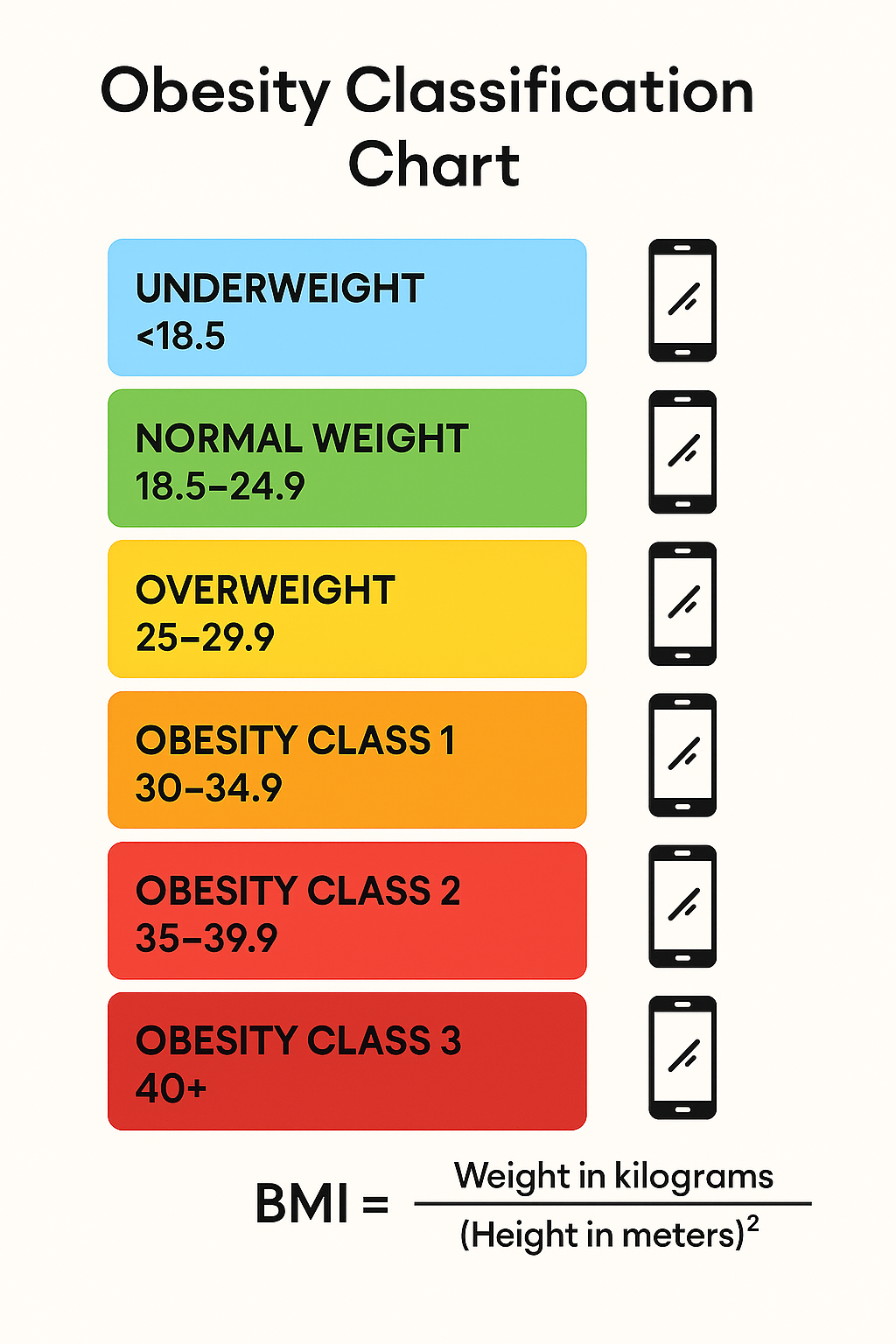Class III obesity, also called “severe obesity” or “morbid obesity,” is the most serious category of obesity. It significantly increases health risks and requires medical attention.
What Is Class III Obesity?
- Defined by a BMI (Body Mass Index) of 40 or higher
- Considered a chronic disease requiring long-term management
- Increases risk of life-threatening conditions like heart disease, diabetes, and stroke
Health Risks of Class III Obesity
- Heart Disease & High Blood Pressure – Extra weight strains the heart.
- Type 2 Diabetes – Fat affects insulin resistance.
- Sleep Apnea – Breathing problems during sleep.
- Joint & Bone Damage – Excess weight wears down knees and hips.
- Certain Cancers (breast, colon, liver) – Linked to obesity.
Common Causes
- Genetics – Family history plays a role.
- Poor Diet – High-calorie, processed foods.
- Lack of Exercise – Sedentary lifestyle.
- Medical Conditions (e.g., hypothyroidism, PCOS).
- Psychological Factors (stress, emotional eating).
Treatment Options
✔ Lifestyle Changes – Healthy diet + exercise (under doctor supervision).
✔ Medications – Prescription weight-loss drugs (e.g., Wegovy, Saxenda).
✔ Bariatric Surgery – Gastric bypass or sleeve gastrectomy for long-term results.
✔ Behavioral Therapy – Helps with emotional eating.
When to See a Doctor?
If your BMI is 40+ (or 35+ with obesity-related illnesses), consult a healthcare provider for a personalized treatment plan.
Class III obesity is serious but manageable with medical help. Early intervention can prevent complications and improve quality of life.



